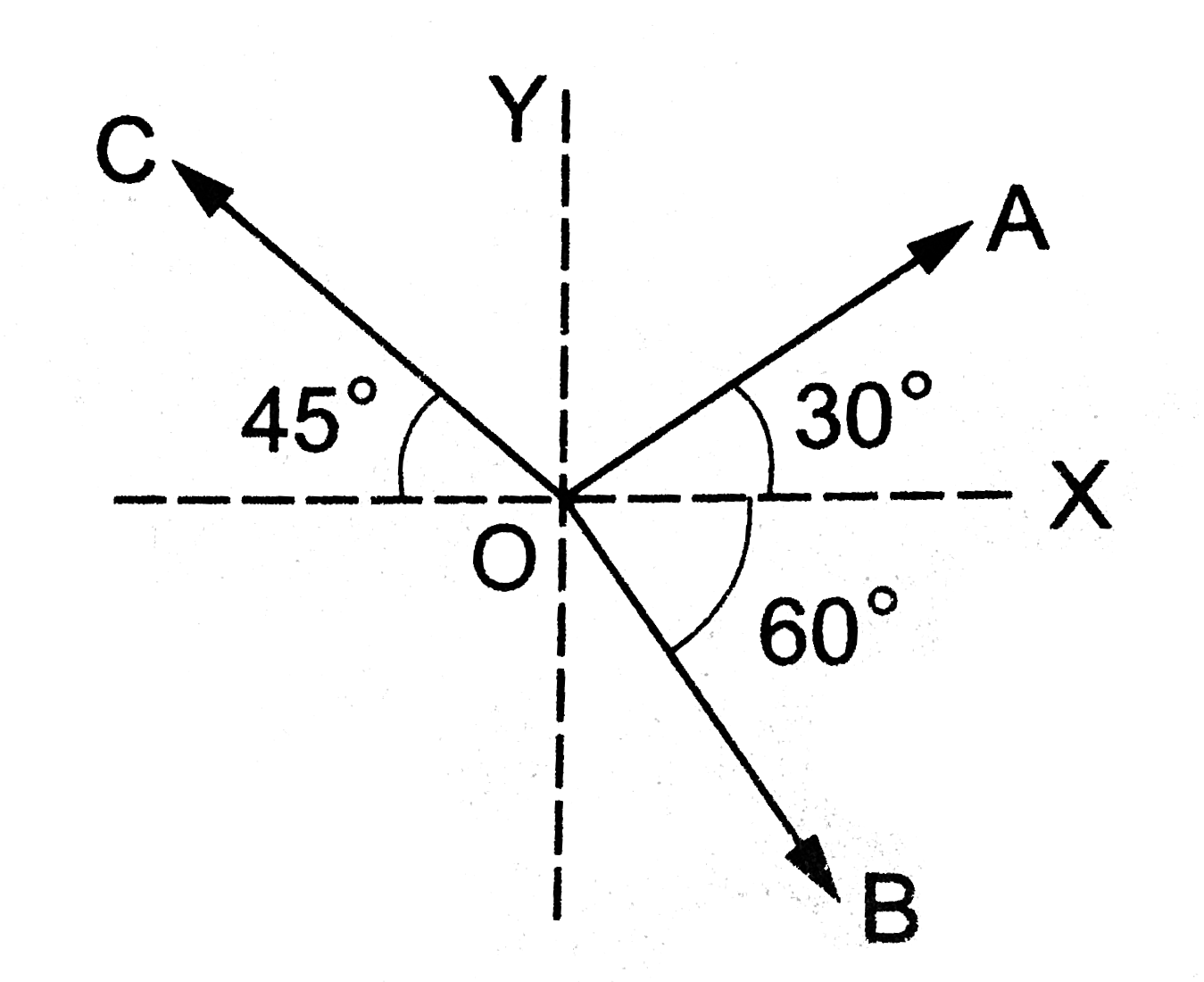Let −−→OA=→a,−−→OB=10→a+2→b,−−→OC=→b where O, A, C are non-collinear points. Let λ denote the area of the quadrilateral OABC and let μ denote the area of parallelogram with −−→OAand−−→OC as ajacent sides show that λ=6μSolution in Telugu
Step by step video & image solution for Let vec(OA)= vec(a), vec(OB)= 10vec(a) + 2vec(b), vec(OC )= vec(b) where O, A, C are non-collinear points. Let lamda denote the area of the quadrilateral OABC and let mu denote the area of parallelogram with vec(OA) and vec(OC) as ajacent sides show that lamda= 6mu by Maths experts to help you in doubts & scoring excellent marks in Class 11 exams.
Updated on:21/07/2023Topper's Solved these Questions
- VECTOR (CROSS) PRODUCT OF TWO VECTORSBOOK - AAKASH SERIESCHAPTER - VECTOR (CROSS) PRODUCT OF TWO VECTORSEXERCISE - Exercise-I
22 Videos
- VECTOR (CROSS) PRODUCT OF TWO VECTORSBOOK - AAKASH SERIESCHAPTER - VECTOR (CROSS) PRODUCT OF TWO VECTORSEXERCISE - Exercise-II
47 Videos
- VECTOR (CROSS) PRODUCT OF TWO VECTORSBOOK - AAKASH SERIESCHAPTER - VECTOR (CROSS) PRODUCT OF TWO VECTORSEXERCISE - Exercise-3.1 ( Short Answer Questions)
23 Videos
- TRIGONOMETRIC RATIOSBOOK - AAKASH SERIESCHAPTER - TRIGONOMETRIC RATIOSEXERCISE - ADDITIONAL PRACTICE EXERCISE (LEVEL - II) (PRACTICE SHEET (ADVANCED) SIGNLE ANSWER TYPE QUESTIONS)
23 Videos
Similar Questions
→aand→b are non-zero vectors such that →a×→b=→b×→a " then" →a,→b are
View SolutionIf →a=3→i−5→j,→b=6→i+3→j are two vectors and →c is a vector such that →c=→a×→b, then ∣∣→a∣∣∣→b||→c|=
View SolutionIf →a=2→i−3→j+→k.→b=→i+4→j−2→k, then find (→a+→b)×(→a−→b).
View SolutionIf ABCD is a cydic quadrilateral such that 12 tan A - 5 = 0 and 5 cos B + 3 = 0, then cos C tan D =
View SolutionLet O be an interior point of Delta ABC such that 2vec OA+5vec OB+10vec OC=vec 0
View SolutionLet →OA=→a,→OB=10→a+2→b,and→OC=bwhereO is origin. Let p denote the area of th quadrilateral OABCandq denote the area of teh parallelogram with OAandOC as adjacent sides. Prove that p=6q.
View SolutionLet O be the centre of a regular hexagon ABCDEF . Find the sum of the vectors →OA,→OB,→OC,→OD,→OEand→OF .
View SolutionLet →OA−→a,ˆOB=10→a+2→band→OC=→b,whereO,AandC are non-collinear points. Let p denotes the areaof quadrilateral OACB, and let q denote the area of parallelogram with OAandOC as adjacent sides. If p=kq, then findk.
View SolutionLet vec OA=vec a,vec OB=100vec a+2vec b and vec OC=vec b where O,A,C are non collinear points.Let P denotes the area of the parallelogram with vec O Anad vec OC as adjacent sides and Q denotes the area of the quadrilateral OABC If Q=lambda P Find the value of lambda
View SolutionLet O be the centre of the regular hexagon ABCDEF then find −−→OA+−−→OB+−−→OD+−−→OC+−−→OE+−−→OF
View SolutionThe magnitude of vectors −−→OA,−−→OBand−−→OC in figure are equal. Find the direction of −−→OA+−−→OB−−−→OC.
 .
.
View SolutionLet −−→OA=→a,−−→OB=10→a+2→b & −−→OC=→b , where O,A,C are non-collinear. Let 'p' denote area of quadrilateral OABC & 'q' denote area of parallelogram with OA & OC as adjacent sides, then pq=
View Solutionमाना कि O समष्टभुज ABCDEF का केंद्र हैं, तो
−−→OA+−−→OB+−−→OC=−−→OD+−−→OE+−−→OF.
View SolutionIf OAB is a tetrahedron with edges and ˆp,ˆq,ˆr are unit vectors along bisectors of
−−→OA,−−→OB:−−→OB,−−→OC:−−→OC,−−→OA respectively and ˆa=−−→OA∣∣∣−−→OA∣∣∣,→b=−−→OB∣∣∣−−→OB∣∣∣,→c=−−→OC∣∣∣−−→OC∣∣∣, then :
View SolutionIf OAB is a tetrahedron with edges and ˆp,ˆq,ˆr are unit vectors along bisectors of
−−→OA,−−→OB:−−→OB,−−→OC:−−→OC,−−→OA respectively and ˆa=−−→OA∣∣∣−−→OA∣∣∣,→b=−−→OB∣∣∣−−→OB∣∣∣,→c=−−→OC∣∣∣−−→OC∣∣∣, then :
View Solution
